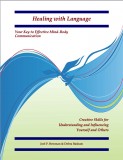At some point in your practice, you may have found that you have told your clients or patients exactly what they needed to do to achieve better health, and they failed to follow your instructions.
While there is no guaranteed way to persuade people to do what’s best every time, you can increase your chances of having others do the things that are best for them by phrasing what you say as an embedded command. Embedded commands and directions communicate to different parts of the mind. Directions meet the needs of the individual’s conscious mind. To engage the person’s unconscious mind, you can simply add an embedded command.
Directions: Ask me when you want to know more about this process.
Embedded Command: When you want to know more about this process, just ask.
To be an embedded command, the phrase needs to be set off or marked linguistically. A slight pause before and after or a change in volume is all it takes to make the difference between a routine statement and an effective embedded command. The unconscious mind will get it.
In written communication, simply leave an extra space before the content you are embedding.
Using embedded commands will allow you to have fun while you learn more about using language effectively.
Send your questions about how other-than-conscious communication skills can hurt or help your patients and clients to Joel P. Bowman (Joel@SCS-Matters.com) or Debra Basham (Debra@SCS-Matters.com), co-developers of Subtle Communication Systems. We will provide answers to those for you. For more information about Neurolinguistic Programming (NLP), Hypnosis or Hypnotherapy, or about the Imagine Healing Process, visit:http://ImagineHealing.info or http://SurgicalSupport.info. Healing with Language: Your Key to Effective Mind-Body Communication is available for a limited time for $10 plus $5 shipping within the U.S. For volume orders and overseas shipping, check with Debra.See the Table of Contents and List of Exercises in PDF format for more information about this comprehensive text and training manual. |
